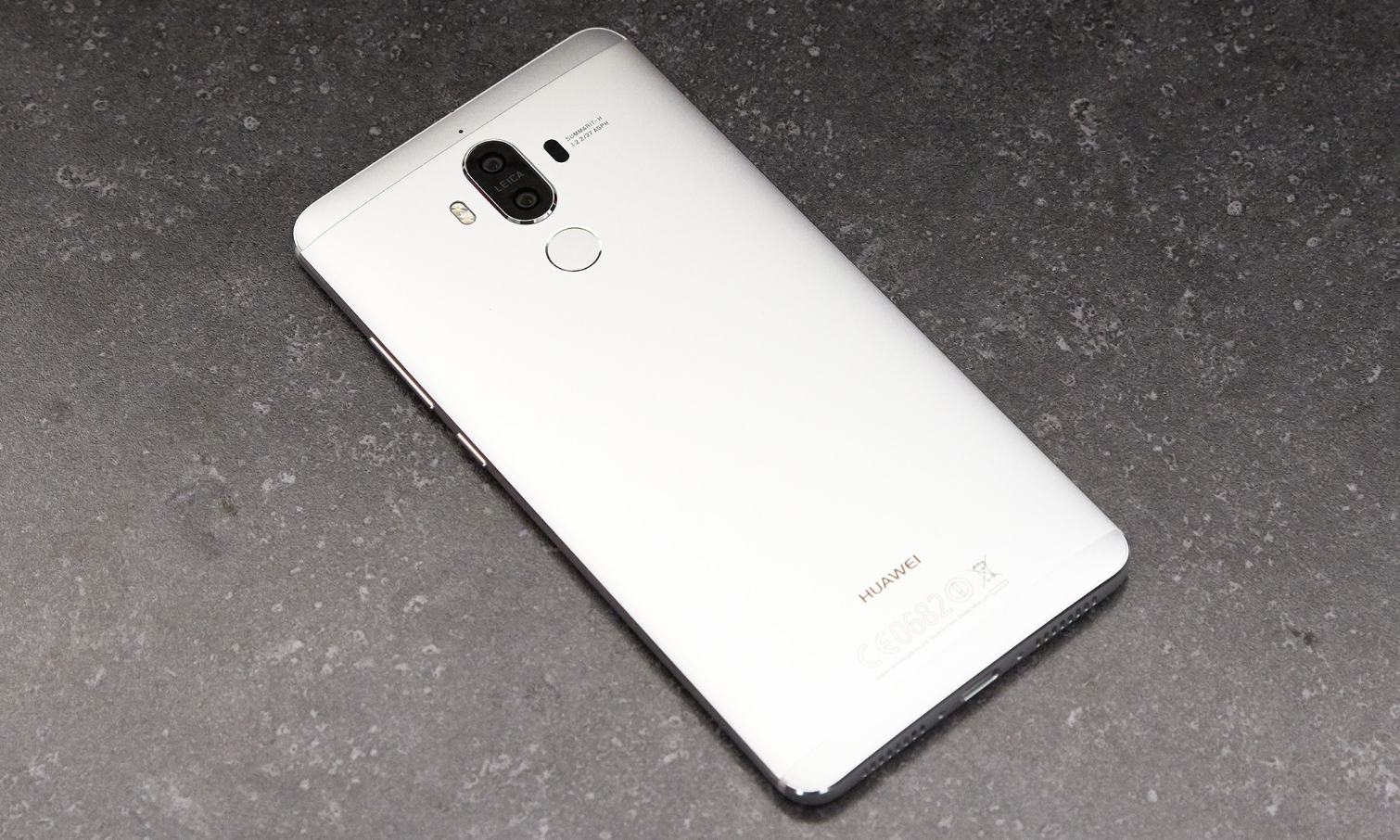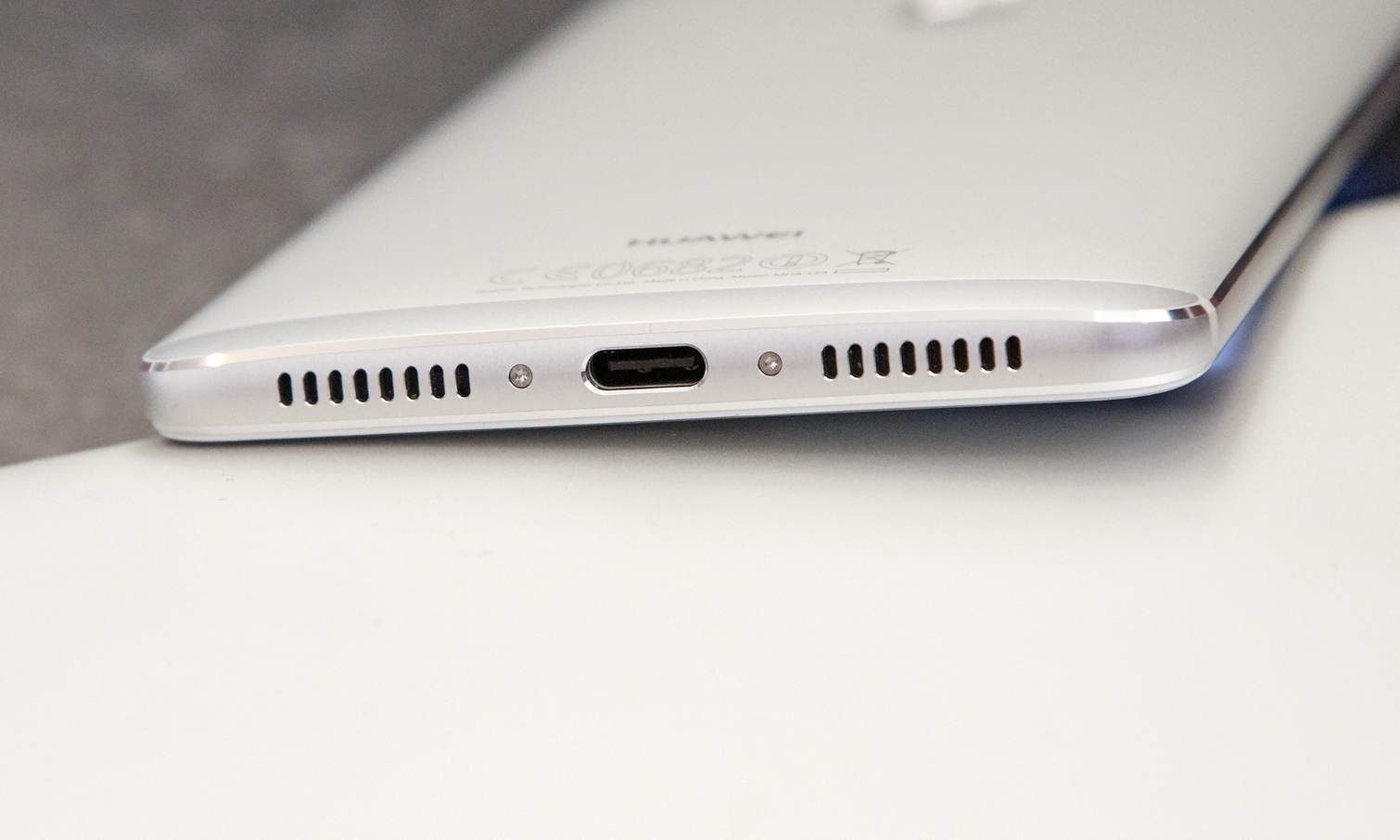Tom's Guide Verdict
Great for big-screen-phone lovers, Huawei's Mate 9 packs a huge, 5.9-inch screen; class-leading performance; 12 hours of battery life; and the smarts to keep the phone speedy even months after you get it.
Pros
- +
12 hours of battery life
- +
Superbright 5.9-inch screen
- +
Fantastic performance
- +
Dual SIM tray with microSD slot
Cons
- -
Dull design
- -
Not water-resistant
- -
Grainy low-light photo
- -
Restricted to GSM carriers (AT&T and T-Mobile)
Why you can trust Tom's Guide
If you're looking for a true big-screen phone — that is, one with a display larger than 5.5 inches — the Huawei Mate 9 stands out. It has a giant, 5.9-inch, full-HD screen; Huawei's blazing new Kirin 960 chipset; dual rear cameras; and a massive, 4,000-mAh battery that offers a full 12 hours of battery life. And because Huawei wants to make sure the phone stays fast even a year or two after you buy it, the phone maker has even included machine learning that will clean and optimize the phone regularly to keep it in tip-top shape. We can't claim to know how this phone will perform in 18 months, but right now, the Mate 9 impresses.
Editor's note: At CES 2017, Huawei officially confirmed that the Mate 9 will be coming to the U.S. starting on Jan 6 for $600. It will be available in stores at Best Buy and from online retailers including Amazon, Newegg and B&H. Huawei also announced that it has partnered with Amazon to build the Alexa digital assistant into the Mate 9, although there is no set timetable for the arrival of this feature.
Design: Premium build, lackluster looks
With a big, 5.9-inch screen in front; curvy, 2.5D rounded glass on its sides; and smooth, brushed aluminum on the back, the Mate 9 certainly has the feel of a premium device. But it doesn't excite me. The Leica branding between the phone's two rear cameras gives it an air of prestige, but compared to Huawei's own Nova and Honor 8, the Mate 9's looks aren't nearly as striking — and let's not forget that both of those phones are midrange devices that cost hundreds less.

The Mate 9's lock button and volume rocker are nice and clicky, and although the rear fingerprint sensor feels a bit on the small side, it never failed to recognize my digits. You can even make gestures on the fingerprint reader to perform actions, such as swiping down to open the notification tray or swiping left and right to browse through photos when using Huawei's gallery app.
I like how the Mate 9's SIM card tray has space for a second SIM or microSD card, and that Huawei included an IR blaster on top for controlling your home AV system, especially considering that's a feature companies like Samsung and Google have left off their recent flagship phones.
MORE: Best Smartphones on the Market Now
At 6.17 x 3.1 x 0.31 inches, the Mate 9 has the biggest screen in its class, but its smaller bezels make it smaller overall than both the iPhone 7 Plus (6.23 x 3.07 x 0.29 inches) and the LG V20 (6.29 x 3.01 x 0.3 inches). However, the 6.7-ounce Mate 9 outweighs the iPhone 7 Plus and the LG V20, which weigh 6.63 and 6.24 ounces, respectively.
Get instant access to breaking news, the hottest reviews, great deals and helpful tips.
Display: Bright like a diamond
If you're looking for a true flagship phablet, the Mate 9 and its 5.9-inch, full-HD screen has to be at the top of your list. Although I wish Huawei had opted for a 2560 x 1440 quad-HD screen as you get on most big-screen phones, you can spot the difference only if you have perfect eyesight and are looking at the phone from less than 6 inches away.

The Mate 9's screen is also an LCD, so you won't get the pure blacks of an OLED display. But the Mate 9 makes up for its low contrast in brightness. When I checked out the latest trailer for Wonder Woman, the Mate 9 delighted with gorgeous, cerulean water and bright, fiery sparks. However, I did notice that some scenes looked a bit too yellow. Thankfully, the Mate 9 offers a color-temperature adjustment in its Settings menu, and in less than 15 seconds, I got colors looking just as accurate as they were on my calibrated desktop monitor.

Sporting a peak brightness of 630 nits, the Mate 9 can get brighter than the Google Pixel XL (396 nits), the iPhone 7 Plus (578 nits) and the LG V20 (512 nits). The average brightness for smartphones is almost 200 nits lower, at 431 nits.
The Mate 9 also has a pretty wide color range for an LCD-equipped phone. It covers 143 percent of the sRGB spectrum versus the LG V20's 130 percent. However, the Pixel XL's OLED display is on another level, with an sRGB color range of 191 percent.
The Mate 9's color accuracy is just OK. It earned a Delta-E rating of 4.16, compared to the Pixel XL's rating of 5.88 and the V20's rating of 3.96. Numbers closer to 0 are better in this test, and we generally consider scores less than 1 to be very good.
Audio: Clever stereo speakers
Perhaps Apple is right that leaving out a 3.5mm headphone jack is a sign of courage, but at least the headphone-jack-equipped Mate 9 works happily with all of your earbuds and headphones. More important, when you aren't plugged in, the Mate 9 can pump out stereo audio by combining its earpiece and bottom-mounted speaker to create a richer, more balanced wall of sound.

In the absence of real dual front-facing speakers, the Mate 9's approach is a great bonus when you want to watch movies in bed, and something I'd like to see other companies implement more often.
Performance: A new speed king
For years, Android fans have envied the stellar performance they saw from Apple's A series processors. But because the Mate 9 is equipped with Huawei's new Kirin 960 chip, 4GB of RAM and 64GB of storage, its performance rivals that of the fastest phones on both sides of the OS divide. Huawei went a step further, implementing machine-learning programming that, in theory, should keep the Mate 9 feeling fast month after month.
In day-to-day use, the Mate 9 feels exceedingly quick. There was no detectable lag when I flipped among screens on the Home menu or switched among apps, and when we ran benchmark tests, the Mate 9 posted some of the highest scores for overall performance we've seen.

On Geekbench 4's general performance CPU test, the Mate 9 scored 5,579. That's even higher than the A10 Fusion-powered iPhone 7 Plus' mark of 5,392. It's also way better than the 4,146 score from the Pixel XL, which features Qualcomm's latest Snapdragon 821 CPU.
The Mate 9's speed also makes surfing the web faster and more responsive. On the JetStream 1.1 JavaScript test, the Mate 9 scored 67.8; in comparison, the Pixel XL scored 55.93, and the LG V20 scored 46.7.
MORE: Best Cheap Unlocked Smartphones
When it came to graphics, the Mate 9 performed well but didn't top numbers from other Android flagships or the iPhone 7 Plus. That's a little surprising, considering the Kirin 960 chip includes ARM's G-71 graphics processor and supports the Vulkan graphics standard, which offers improved multithreading and rendering. On 3DMark's Ice Storm Unlimited test, the Mate 9 scored 26,099, versus 36,104 for the iPhone 7 Plus and 28,182 for the Pixel XL. The category average for smartphones is significantly lower, at 16,478.
Cameras: Two cameras and lots of modes, but photos could be sharper
Dual rear cameras are starting to become the normal for flagship phones, and with two shooters sporting the legendary Leica branding, I was expecting a lot from the Mate 9. If you like having a ton of different shooting modes and filters at your disposal, you won't be disappointed, but the overall quality wasn't quite as good as I had hoped.

On the back, you get a 12-megapixel traditional main camera in addition to a 20-MP monochrome cam that the Mate 9 uses to gather extra depth data and to capture standard black-and-white photos. Both rear cameras feature f/2.2 apertures, and in front, there's an 8-MP selfie cam with an f/1.9 aperture.
One problem with the Mate 9 is its lack of an auto HDR mode, which puts it behind other leading camera phones such as the ones on the Pixel XL, Samsung Galaxy S7 and iPhone 7. When you do turn on the Mate 9's HDR mode, though, the difference between HDR and non-HDR shots isn't very big, so it wouldn't have much of an impact on the final image.

Take, for example, this autumn time display. The HDR shot from the Mate 9 actually looks worse than the phone's non-HDR version due to processing that trades color richness and contrast for a more balanced exposure. If you compare the Mate 9's shot to one from the Pixel XL, you can finally see what good HDR should look like.
The Pixel's shot not only features a greater range between the darkest and lightest areas, but the colors on the pumpkin and flowers are significantly more saturated, and its focus is much sharper.

Speaking of focus, shots from the Mate 9 often came out softer than I would have liked, which makes tapping the screen to focus not just helpful, but necessary. If you look at a shot I took across the Hudson River at 100 percent, the Mate 9's picture simply doesn't look as crisp as an image from a Pixel XL or iPhone 7 Plus, even though all three phones have 12-MP rear cameras.

In low-light conditions, it's a similar story. This non-HDR shot by the Mate 9 looks dark and blurry compared with a pic from the Pixel XL. Don't get me wrong: It's not a full-on disaster, but from what I've seen, the Mate 9's camera is a tier below what you get from Google and Apple's best.
So what does the Mate 9 bring to the party? First, its wide-aperture mode gives you a really fun and useful way to change the depth of field on the fly. Because the slider can be adjusted freely from f/0.95 to f/16, the Mate 9's depth-of-field feature is much more flexible than the iPhone 7 Plus' on-or-off-only Portrait mode.

The Mate 9 also offers a ton of preset modes, including ones for light painting and even embedding your own watermark. My favorite might be the phone's Monochrome mode. This mode switches shooting duties entirely to the 20-MP monochrome camera, so you get not only classic black-and-white pics that do the best job of evoking the camera's Leica lineage, but also more detail, thanks to its higher resolution. The Mate 9 also offers a number of vintage filters and a full-featured Pro mode complete with manual controls and the option to record video at up to 4K/30 frames per second.
On the front of the phone, the 8-MP selfie cam is pretty compelling. It's supersharp, and with an f/1.9 aperture, it performs even better in low light than the two cams in the back. You even get handy features such as a selfie timer and mirror-mode toggle to help you get the best shot possible.
Software and OS: A simplified Android skin
The Mate 9 runs the latest version of Android 7.0 Nougat, although Huawei has put its own EMUI 5.0 skin over the top. Most of the standard functions, such as pulling down from the top to see quick settings and notifications, are still there. However, Huawei thoughtfully optimized many of the settings and menus so that you are never more than two or three taps away from the app or feature you're looking for.

You also get Huawei's trademark knuckle gestures that let you do things like knock twice to take a screenshot or draw a line across the screen to turn on multiwindow mode, although I think these gestures are more novelties than real time savers. Overall, Huawei's EMUI is a cleaner, more lightweight take on Android, and unless you are a real stickler for stock, there's not much to complain about.
Battery Life: Top 10 longevity
One of Huawei's main goals for the Mate 9 was true all-day battery life, and with a time of 12 hours and 6 minutes on the Tom's Guide Battery Test, the Mate 9 easily earned a top 10 spot on our list of the longest-lasting phones. Although it fell 41 minutes short of the mark posted by the Mate 8, Huawei's new phone lasted 45 minutes longer than the Pixel XL (11:11), and a whopping 3 hours longer than the LG V20 (8:47). Even the iPhone 7 Plus' battery life is 90 minutes shorter, at 10:38.

Even better, during a weekend of testing, the Mate 9 easily lasted a full two days on just a single charge. After starting at 100 percent at 9 a.m. Saturday morning, the phone finished with 17 percent in the tank around 11 p.m. Sunday night. That includes time spent watching videos on YouTube and several hours each day shooting pictures to test the camera.
MORE: Smartphones with the Longest Battery Life
Bottom Line
Huawei's Mate 9 is the kitchen sink of phones. You get a boatload of features, such as an IR blaster, clever stereo speakers, a fingerprint sensor, and a big, bright, 5.9-inch screen. It also has some of the best performance we've seen from a mobile processor. Although we haven't had time to test Huawei's machine-learning speed-saving claims, even if the Mate 9 lost 20 percent of its speed, it would still be the fastest Android phone on the market. And let's not forget about the Mate 9's fantastic 12-hour battery life, either.
I still wish the Mate 9's dual rear cameras were sharper and that its design were a bit more dramatic. Photo and video enthusiasts will be better served by the big-screen LG V20. But for $600, when the Mate 9 comes to the U.S. on Jan 6 2017, it will be the big screen phone to beat.
Sam is a Senior Writer at Engadget and previously worked at Gizmodo as a Senior Reporter. Before that, he worked at Tom's Guide and Laptop Mag as a Staff Writer and Senior Product Review Analyst, overseeing benchmarks and testing for countless product reviews. He was also an archery instructor and a penguin trainer too (really).
-
raju502 Sam- Good review. Please provide complete display calibration details like grey scale accuracy, sRGB accuracy, color temperature etc so that the review will be completeReply -
raju502 I want to buy this phone. But other tech site. Phone arena says the display is not not accurate with over saturated colors, cold color temperature. Would have been nice if u include completr display detailsReply
